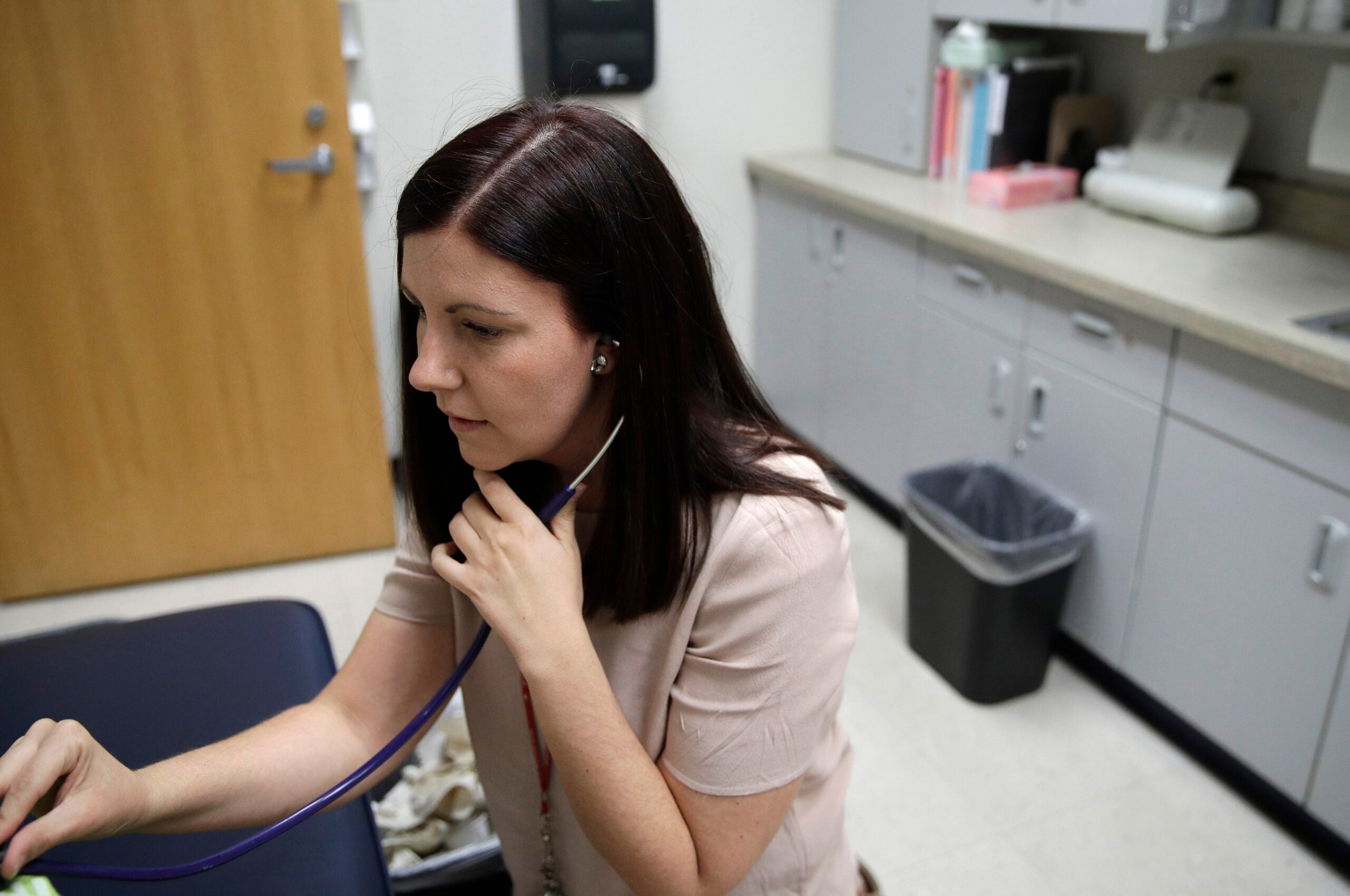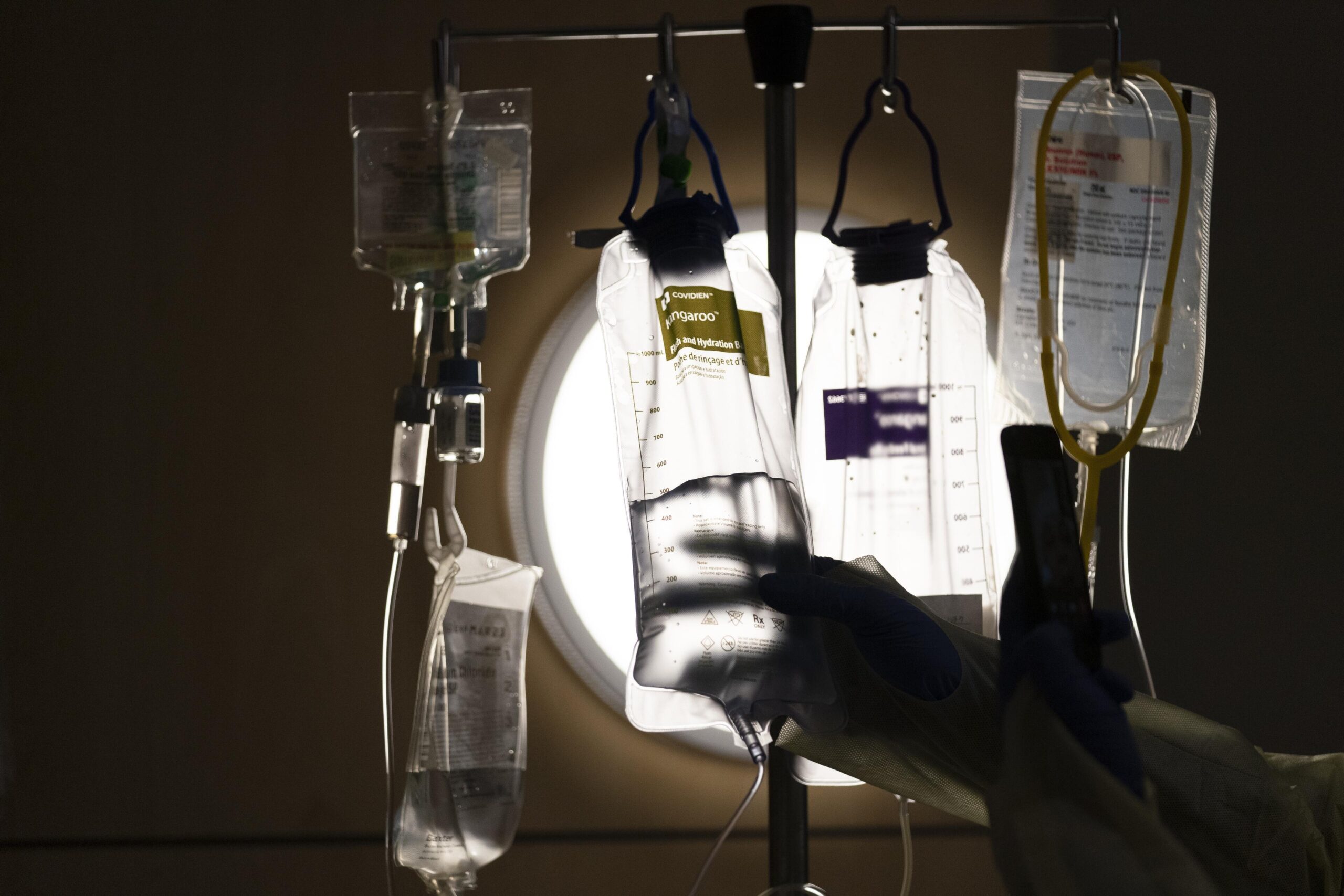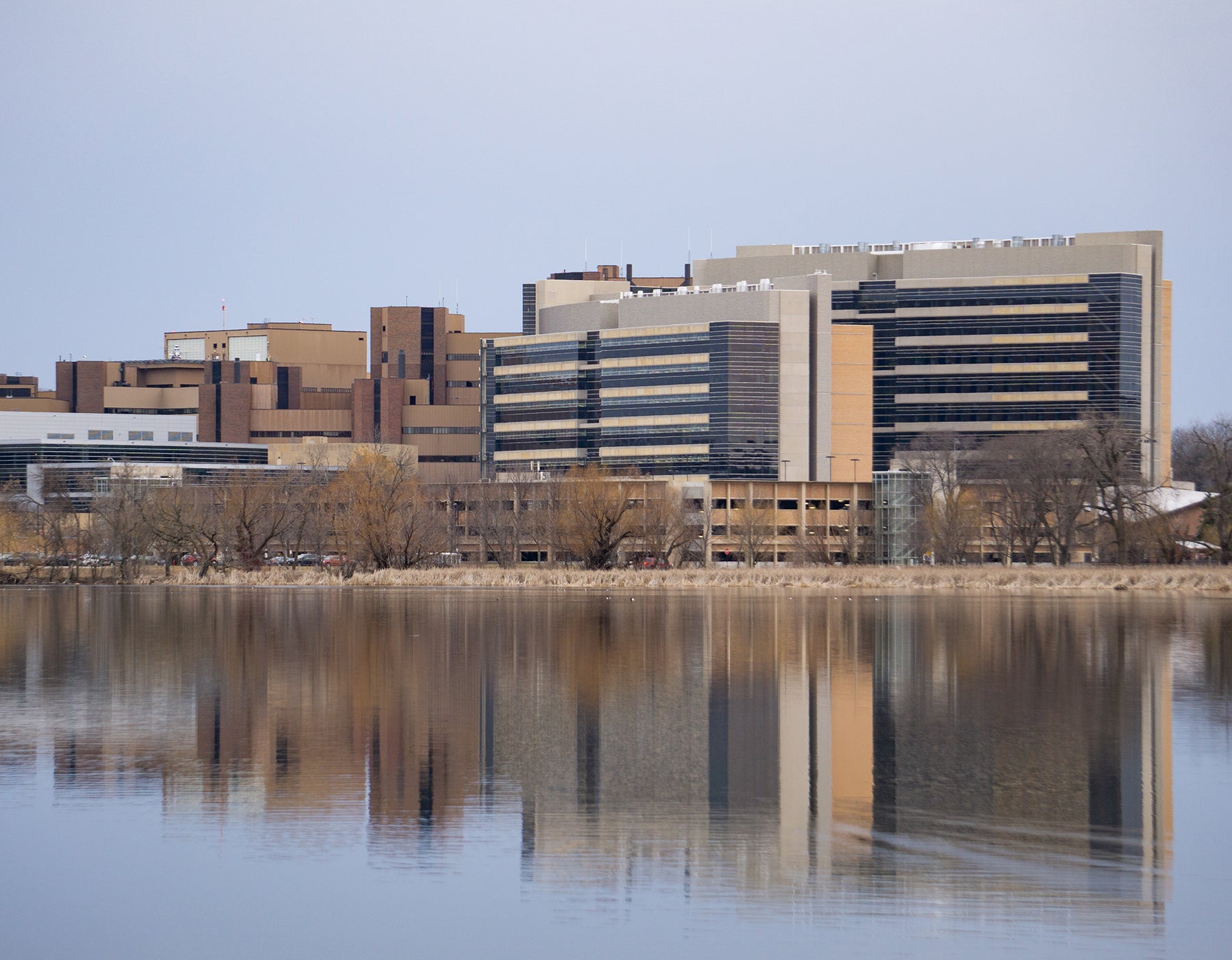Hospital staffing vacancy rates have mostly stabilized in Wisconsin, but the need remains high as the state’s baby boomers retire — increasing demand for health care.
That’s according to a new Health Care Workforce Report from the Wisconsin Hospital Association. The report found that from September 2021 to September 2022, overall staffing vacancy rates at hospitals remained unchanged at roughly 10 percent. In 2020, those vacancy rates were 5.3 percent.
Across the state, staffing vacancy rates were in double digits for eight of 18 health care professions tracked in the report. Those include licensed practical nurses, certified registered nurse anesthetists, certified nursing assistants, respiratory therapists, surgical technologist, radiologic technologists, registered nurses and certified medical assistants.
News with a little more humanity
WPR’s “Wisconsin Today” newsletter keeps you connected to the state you love without feeling overwhelmed. No paywall. No agenda. No corporate filter.
The highest vacancies were among licensed practical nurses, or LPNs, and certified registered nurse anesthetists, or CRNAs. According to the report, one in four LPNs and one in five CRNAs employed by hospitals are nearing retirement.
Ann Zenk, senior vice president of workforce and clinical practice for the Wisconsin Hospital Association, said workforce shortages in health care can lead to burnout for staff members who have to work extra shifts or overtime to make up for the gaps.
While hospitals do their best to prevent staffing challenges from affecting care, patients still feel the effects, Zenk said.
“When those gaps can’t be filled, that means that maybe a service can’t be offered any longer,” she said. “When there’s a staffing shortage, patients and their families might have to wait longer in the emergency department or for a physician appointment, or they might have to travel further to get that care.”
The hospital association doesn’t have workforce data for 2023. Even so, Zenk said health care leaders around the state have told the association that it was still tough to recruit talent last year, but it did get somewhat easier than in 2021 and 2022.
“Health care professionals often have more than one offer to look at, so people have their choice of jobs to pick,” she said. “That being said, even though it still takes a while to fill a position, it’s getting easier.”
Challenges come as baby boomers age out of workforce
The workforce challenges facing the health care industry come amid what the report calls a “Silver Tsunami” of baby boomer retirements. By 2030, the report says all baby boomers will be of retirement age.
As the population ages, demand for health care increases. In 2021, people 65 or older made up less than 20 percent of the population, but accounted for 40 percent of health care spending in the United States, the report said.
Wisconsin is among the 15 oldest states in the nation in terms of demographics, with nearly 20 percent of the state’s residents at retirement age, according to the report.
“That surge of retirements is going to end for other industries. For health care, the surge in demand created as we age is going to persist for a couple more decades,” Zenk said. “It’s really urgent that — with a shrinking workforce — we work really hard to attract and retain more people to the health care workforce to grow the workforce faster, to meet the demand that we know is going to be there.”
To try to help the state’s health care providers meet the projected surge in demand, the Wisconsin Hospital Association Foundation last month launched a workforce recruitment advertising campaign to help young people learn about careers in the industry.
The campaign features digital advertising on social media, primarily targeting middle and high school students.
Zenk said the campaign comes as enrollment in health care fields at colleges and universities increased by 4.4 percent in 2022 and 2023.
“We’re already getting lots of traffic from students and from their adult influencers, like parents and teachers,” Zenk said. “It’s really exciting that we’re getting the word out and really important that we do. There’s endless options and opportunities for health care careers and the demand is only going to increase.”
Wisconsin Public Radio, © Copyright 2026, Board of Regents of the University of Wisconsin System and Wisconsin Educational Communications Board.





